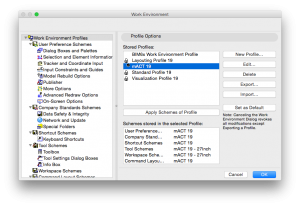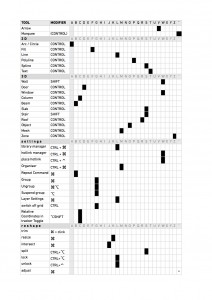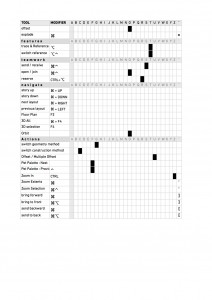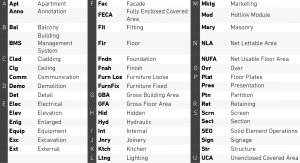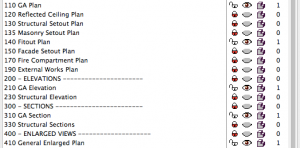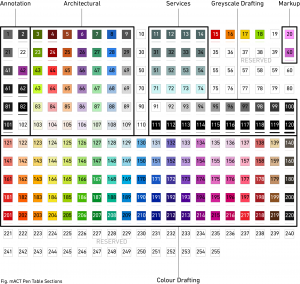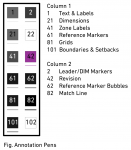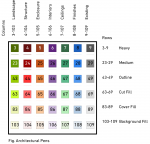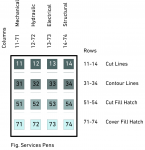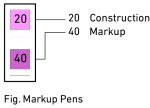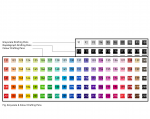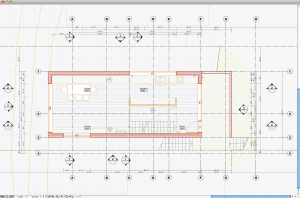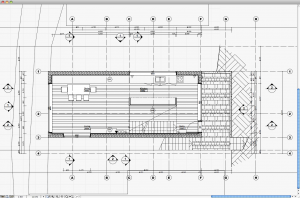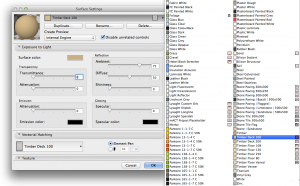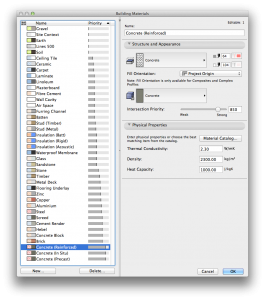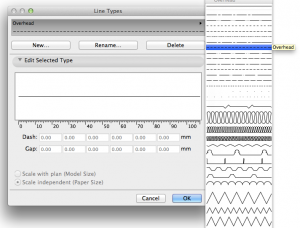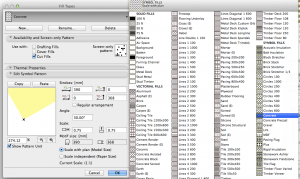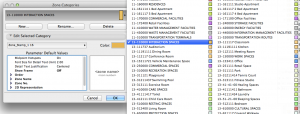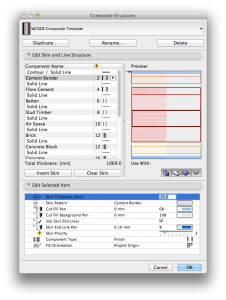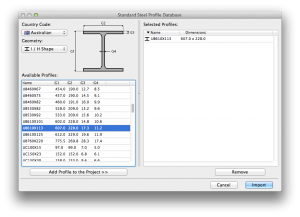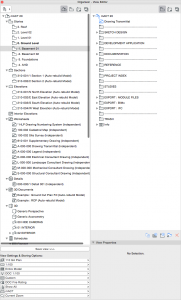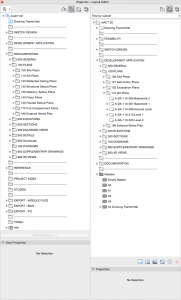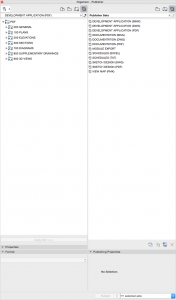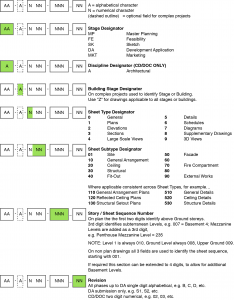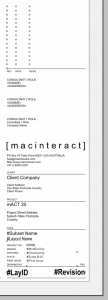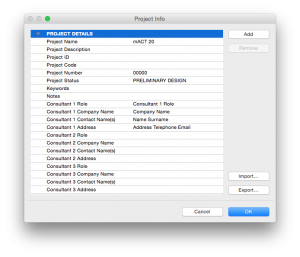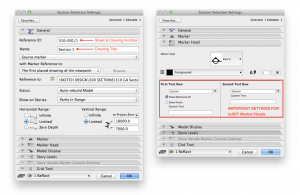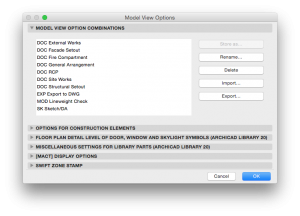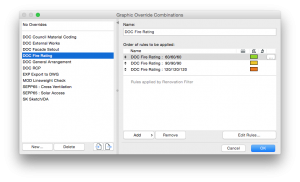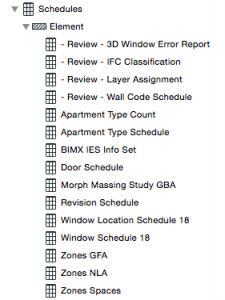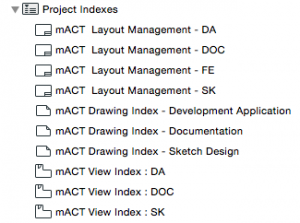Getting Started
Thank you.
First of all, a thank you from us at macinteract for purchasing our product!
We greatly appreciate your support and value your feedback.
Installation Instructions
Please read the installation instruction here.
Introduction
Why Use a Template?
When you first opened ARCHICAD you presumably began with the default template included with ARCHICAD, which although localised is basically a blank file.
Almost immediately you will have discovered that far too much of your time was spent configuring element settings to get the desired appearance, tweaking Layers and Layer Combinations, setting up Views, etc
ARCHICAD is an extremely powerful and complex tool, thus it quickly becomes obvious that more than just a blank file to start from is required for it to be used effectively by everyone in your office.
A template (like mACT) including predefined attributes greatly increases the consistency for all drawings on all projects, and therefore improves the efficiency and flexibility of your staff across projects.
Most architectural practices have a clear idea what their drawings should look like, from the representation of walls down to the graphics of furniture. The objective of a template is to enhance productivity by standardising and facilitating the drawing process, enabling users to focus on the design rather than struggling with office specific conventions.
In all our years working in Architecture, nothing has improved productivity more than a well thought through, standardised approach to how ARCHICAD is being used in an office. Training has its value and good support is still essential, but nothing is more valuable than a template that has been tested in the trenches and refined over time – in fact we spent years developing mACT and we continue to improve it constantly.
To fully understand what it can and can’t do, to not get frustrated or to simply get a greater efficiency using it, training is highly recommended. This is why macinteract offers training to suit your needs, whether that is self-guided or (in case you’re based in Sydney (Au)) in our office or your office.
What is included?
mACT comes with the following components:
- mACT 20.tpl (the ARCHICAD Template file which will act as a framework for your Office Template);
- mACT 20 Library.lcf (the supporting Library containing customised objects used by the mACT)
- mACT 20 Getting Started.pdf (this document)
- mACT 20 Favorites.prf (predefined element settings used in the mACT to both get you started and illustrate features)
- mACT 20 Backups of Schedules, List, Project Info & Attributes.
What is NOT included?
Although mACT contains an extensive feature list, it is not possible to account for all potential uses of ARCHICAD by different practices to suit their specific project requirements.
The emphasis with mACT is therefore to provide a robust framework from which individual practices can quickly customise a template to suit their requirements.
mACT should be treated just as any other system within an office – a constantly evolving tool which is improved over time, based on the experiences and feedback of its users. This process is undertaken both internally at macinteract and in collaboration with architectural practices using mACT.
If you have any questions or feedback regarding mACT, please forward these to your office CAD manager who will collate these for discussion with macinteract or go to mactify.uservoice.com to directly interact with the team behind mACT.
Rest assured that all user feedback we receive is valued and will be replied to through our development process.
DO & DON’T
DO ensure everybody on the team has received adequate training in both ARCHICAD and the mACT template. ARCHICAD is a complex piece of software and knowing how to use it is essential in keeping frustrations to a minimum and your projects running smoothly.
DO create and keep a backup of your original mACT.
DO ask questions. If you are unsure where to find a feature or element, or are unsure how something functions ask your office CAD Manager.
DO provide feedback on the template to your office CAD Manager and / or directly to the macinteract team via email – this is an important part of the ongoing development process for the template.
DO navigate the Model via the View Map – you do not need to manually adjust Layer Settings, Model View Options, etc., if you navigate using the View Map system.
DO use the Favourites Palette and save frequently used elements to this list and share them with your teammates!
DO use the Saved Views with correct settings placed on Layouts and Layout Book & Publisher to produce drawings (Print or digital).
DON’T just draw! To maintain drawing standards Model Element settings should be picked up from the Favourites Palette. Favourites should be set up and maintained across workstations by a dedicated experienced ArchiCAD user on your project.
DON’T create new Layers (or any other attributes, such as Materials, Line Types, etc.) without approval of the office CAD Manager – also refer section on Attributes further down.
DON’T copy items into your current file from older ARCHICAD files without checking the element attributes first. Failure to do this can quickly add unwanted attributes such as Layers, Fills, Line Types and Materials to your clean ARCHICAD file.
DON’T ever use XRefs ! ! !
You can place DWG’s as external drawings and still have control over the DWG’s layer visibility via its settings and retain the ability to snap to elements. What you avoid getting is all the Attributes that come with the DWG, which will create additional attributes in your files.
For other Tips & Tricks and straightforward workflows from seasoned professionals check out the Field Guide series on our website.
mACT : Work Environment
mACT includes a preconfigured Work Environment (WE) and can be loaded via:
- ARCHICAD > Work Environment > Work Environment Profiles > Import
- Locate the WE in the Extras > Work Environment folder on your computer / server.
Once loaded do not forget to apply the new mACT WE and choose to set it as your default WE – ensure that upon import you have selected the very first entry, i.e., the Profile and not one of the Schemes, in the hierarchy, as there are various submenus which look similar.
mACT Toolbar
The mACT Work Environment comes with the mACT Toolbar, which makes commands hidden in the default ArchiCAD menu structure more directly accessible:
Shortcuts
You may also choose to print a list of the included Shortcut Scheme, to gain a better overview over the many included Shortcuts.
ARCHICAD > Work Environment > Shortcut Schemes > Keyboard Shortcuts > Show in Browser
mACT : Attributes
Attributes
mACT includes a comprehensive set of Attributes which should provide for the majority of users to work with the template without further customisation. However as discussed earlier mACT is really a framework for ARCHICAD which whilst providing a robust starting point also acts as a guide to permit users to quickly extend the template to suit the particular needs of their office or project.
Whilst we think the attributes provided should fit the needs of most users, we understand everyone has their own graphical preferences and so may wish to modify the attributes we have provided. There is no issue with doing this, but please keep in mind that the attributes provided are used throughout the template – both assigned to default Tool settings and Favourites, and used in other Attribute definitions (e.g Timber Deck 100 fill is assigned as Vectorial Hatching for Timber Deck 100 material). Therefore be very careful when modifying existing Attributes as this can impact many elements and locations in the file. The best approach to creating new Attributes is to duplicate an existing one and then modify that duplicate to create the desired outcome.
It is important that Attributes and their Index Numbers (hidden to the user except via the Attribute Manager) are consistent across all ARCHICAD files on a Project, to ensure consistent display of element properties and facilitate their transfer between files..Attributes, need to be carefully and actively managed by the most experienced ARCHICAD User on a Project or in the Office.
Layers & Layer Combinations
Layers
Layers are the primary means of organising or classifying Model Elements in ARCHICAD and controlling their visibility in various Views.
Layers in mACT are structured around classifying elements according to the Australian NATSPEC Specification System.
Although a Building Element classification system such as Uniformat (US) or Uniclass (UK) may be be more suited to categorisation of layers, Australia has currently no recognised system thus the NatSpec Work Results system has been selected as the most suitable locally accepted system for this purpose.
The mACT layer system follows the basic workflow of first building a digital Model of the building and then annotating and generating documentation from the same model. Layers are organised around the following groups of elements:
| 0 > PRESENTATION & DRAFTING | Presentation elements – (2D + 3D) People, Vehicles, diagram elements, etc |
| 1 > REFERENCE & ANNOTATION | Annotation elements – this is where all annotation (typically 2D) of the Model is placed including Labels, Drawing Markers, Dimensions, Room Labels, etc The REF layers are for the various Markers such as elevation, section or detail markers. |
| 2 > SITE & LANDSCAPING to 9 > ELECTRICAL |
The Model – these layer groups are where your building elements are placed (in 3D!). |
| MOD, REF, SEO | Non-building or file structure elements – Hotlink Master layers, construction guides, consultant drawings, solid element operation elements, etc |
Generally, the organisation of layers is hierarchical, the layer names are alphanumeric and layer names use easy to remember abbreviations without spaces in the singular (no plural terms).
There is a basic principle of modelling in 3D in ARCHICAD, however where 2D elements are required these reside on the same layer as a normal 3D element would. For example a 2D dashed line representing the alignment of a concrete wall hidden behind an element would be placed on the 03 WallIntConc layer along with a visible 3D wall element.
Layers are assumed to be scale agnostic unless otherwise indicated in their layer naming – scale specific layers generally only occur in the annotation layer groups as building elements are never scale specific.
Layer Abbreviations
To be able to read the layer name in the info box it needs to stay under a certain length. This necessitates the use of Layer abbreviations:
Layer Combinations
mACT contains a comprehensive list of Layer Combinations to allow for flexibility in appearance of various View Sets. Combinations are generally numbered according to the View type they are assigned to, which are in turn numbered according to the drawing set the corresponding Views are part of in the Layout Book – please refer to the Document Numbering System for more information on this topic.
Note that hidden layers are also LOCKED, allowing them to be not displayed on popup palettes throughout ARCHICAD.
Pens & Pen Sets
Pen Sets in ARCHICAD control the colour & weight of all available pens used to draw elements. Since ARCHICAD 10 it has been possible to create multiple Pen Sets, enabling the user to quickly change the appearance of elements (colour and line weight) by simply applying a different Pen Set to that view.
There are two basic approaches to using the Pen Table in ARCHICAD.
The first is to assign pens using the same principle as conventional drafting where there are around 7 pens (but can be more) with increasing weight (a la Rapidograph pens) – this approach is commonly know as a Pen-by-Weight system.
The second is to leverage the 255 pen depth of the Pen Table to assign certain pens to certain functions (e.g. Pen 4 for Structural Cut Lines) – commonly known as a Pen-by-Function system.
mACT uses a Pen-by-Function system whereby elements of certain categories are assigned specific pens which are not shared with elements of a different category.
Whilst this is slightly more complicated than a simple Pen-by-Weight approach using only a few pens, this allows for much greater control over the appearance of elements in various forms of documentation.
A few examples of functions this system enables are:
- Visual distinction between elements when modelling, e.g. all structural elements have red outlines;
- Adjustment of pen weights for various element types based on the drawing type, e.g. grey out everything but the concrete on concrete setout drawings, beef up pen weights in 1:5 details, etc
- Adjustment of pen weight for elements whilst keeping annotation weights the same across scales, e.g you don’t usually want to fatten your leader lines at the same time as building elements which may be using the same pen – Pen-by-Function splits annotation pens from element pens;
- Generation of special Drawing types, e.g. Fire Compartment Plans – use dedicated background pens to change appearance of fire rated walls between regular and Fire Compartment drawings;
Pen Table
The mACT Pen Table can be subdivided into the following Pen function sections:
| Annotation Pens | Annotation Elements – Labels, Text, Markers, Gridlines, etc |
| Architectural Pens | Architectural Model Elements – Structure, Facades, Partitions, etc |
| Services Pens | Services Elements – Lighting, Sanitary Fixtures, AC Ducting, etc |
| Greyscale Drafting Pens | Greyscale 2D Sketch / Presentation Elements – People, Vehicles, Diagrams, etc |
| Color Drafting Pens | Color 2D Sketch / Presentation Elements – People, Vehicles, Diagrams, etc |
Please note when you hover above a pen a detailed description of a pens typical usage appears.
Pen Sets
One of the key features of the mACT Pen Sets is the distinction between Pen Sets used for working – ‘Model’ Pen Sets – and Pen Sets for printing/publishing – the ‘Doc/Pres’ Pen Sets. The Model Pen Sets are applied to working Model Views as you edit the model or drawings and facilitate quick identification of elements via colour for various types. The Doc/Pres Pen Sets (generally B&W or greyscale) are then applied to those Model Views when placed onto Layouts for printing. The figures below illustrate the difference.
Reference Pen Sets
Override external drawings’ pen sets with mACT Reference pen sets, which unifies their colouring and gives it a clear distinction from your ArchiCAD model.
Surfaces
mACT features an extensive list of Materials covering commonly used building materials and finishes.
Building Materials
mACT 20 includes an extensive list of Building Materials, fully coordinated with Fills, Surfaces and Pen Sets.
Line Types
mACT contains a set of Line Types grouped into three categories:
- Generic (e.g Dashed Short)
- Function-specific (e.g Overhead, Demolition)
- Element-specific (e.g Insulation Batt 100mm)
Fill Types
mACT features an extensive list of Fills covering commonly used building materials and finishes. As Fills can represent either the sectional (Cut Fill) or surface finish (Cover Fill) of building materials, there will often be the need for two fills to cover a particular material. In these instances the fill representing the surface finish is appended with an (E) code – e.g Cement Render can be represented by the fills Cement Render in section or Cement Render (E) in elevation.
Also, mACT has a number of Fills based on room types. This allows for quick global changes.
Zones
mACT contains a set of generic Zone categories based on the OmniClass classification system. These Zone categories cover a wide range of building types – it is expected that offices will delete those categories not typically required for their project types, and then duplicate and modify the generic types to provide specific space-types for their project.
For example residential design practices may make duplicates of the category ‘13-651900 Bedroom’ to develop sub-categories such as Master Bedroom, Guest Room, Nursery, etc
Composites
Unlike the other Attributes, mACT contains only a few predefined Composites. Our experience has shown that the types of composites required for various Wall, Floor and Roof structures are very specific to particular project types, designers and contractors preferences. The approach with Composites is therefore to provide a few template composites which provide a base from which users can develop the composites typically used on their projects.
The primary composite provided is the ‘Composite Template’ (shown below) which contains layers of commonly used building materials or systems with the correct Intersection Priorities, Pens, Linetypes and Fills assigned. The user should duplicate this composite and then delete / modify the skins as required to form the system desired.
We have also provided a few simple composites which illustrate setup for external and internal walls.
Complex Profiles
mACT provides a single example steel profile however an extensive list of standard steel sections can be added to the projects Complex Profiles database as required via the menu item Options > Import Standard Steel Profile.
The only modification required by a user to these imported steel profiles is to assign the correct Pens and Intersection priorities. Typically these imported profiles are Steel and therefore the single Profile provided with mACT can be used as a template for these properties (Opt-Click the existing profile to grab attributes, then Cmd/Ctrl-Opt-Click on the target to inject properties).
mACT : Organizer
From Project Map to View Map to Layout Book to Publisher Sets, mACT comes pre-configured with a number of Saved Views, Drawing packages in the Layout Book as well as Publisher Sets accounting for the typical required output.
Drawing Numbering System
The mACT Drawing Numbering System is based on the United States National CAD Standard (USNCS), which within the provisions of the standard has been adjusted to suit the specific requirements of Australian projects. This system allows for a great flexibility in organising your drawing package, whether that is for a large or small project.
Note that mACT’s layout book has been pre-configured to use this numbering system.
To avoid accidental drawing re-numbering, the numbering is managed manually rather than automated by ArchiCAD.
Drawing Titleblocks
The mACT Titleblock system consists of two components.
The first is the bulk of the titleblock is drawn on a Master Layout using Text, Lines and Fills (and images for logos if required). Text can either be static or Autotext (example of the latter is the Layout Title).
The second are the Revision notes and Northpoint which are placed on each Layout individually (NOT the Master Layout). The Northpoint object can be found in the mACT Library.
Layout specific information, such as revision letter / number, can be found in the individual Layout’s settings. mACT also includes a Drawing List under Schedules, which gives you an over view of all Layouts in a given set. You can edit the Layout settings directly in this schedule.
Project Info
mACT makes extensive use of the Project Info to display information on the Titleblock via Autotext.
Drawing Marker Referencing
Due to the inclusion of a Layout Revision into the Layout ID field (e.g 123-456_01) mACT requires the use of customised Drawing Markers for Sections, Elevations, Details and Worksheet Markers. These can be found in the mACT Library – please refer to images below for the required settings.
Note that the Layout Number and Drawing ID input into the Drawing Marker need to be manually coordinated with the actual Layout Number and Drawing ID of the drawing placed on the layout – they are not automatically linked.
We note this does not make use of ARCHICAD’s ‘automated’ cross referencing, however in our experience once drawings are issued, sheet numbers do not change however sheet revisions do change – which is where the advantage of using a field in the Layout ID for Revision lies.
Graphic Output Control
Graphic output in ArchiCAD is managed in several places: Model View Option, Graphic Overrides & Renovation Filter. (And as discussed earlier Pen Set, Layer Combination & Scale.)
Model View Options (MVO)
mACT includes MVO to suit a variety of desired outputs:
Sub settings allow for control of mACT & Cadswift library parts.
Graphic Overrides
Newly introduced in ArchiCAD 20 are the Graphic Overrides.
mACT includes overrides to display Fire Resistance Levels of Walls by colour using the listing & properties set in individual elements as well as DA Council Coding of materials by colour.
mACT : Revision System
As an alternative to the inbuilt ARCHICAD Revision Manager, mACT offers a revision system that is straightforward and simple.
Revision letters / numbers are part of the Layout’s settings Autotext fields.
You can review and edit layout revision and name directly in the mACT Transmittal Index relevant to the project phase located in Project Map > Project Indexes.
Transmittal Setup
mACT includes a semi automated setup for transmittals.
It uses a (static) Worksheet together with a schedule that lists layouts dedicated to keeping track of drawing issues.
This transmittal needs to be set up before the first time drawings need to be issued. This involves a few steps:
- Open the mACT Transmittal Index relevant to the project phase located in Project Map > Project Indexes.
This should list all layouts that are part of your layout book (relevant to the project phase).
Go Edit > Copy (COMMAND +C does not work!). - Open the worksheet called A-000-000 Drawing Transmittal.
- Paste the copied info from the schedule into the correct location.
No further formatting should be needed to make the text fit in the worksheet’s drawn table.
Note that the copy / pasted info is no longer linked to the mACT Transmittal Index!
While in suspended group mode, delete the column titles from the pasted info as they overlap with the ones already present on the worksheet.
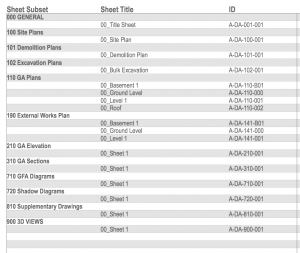
- Set up Consultant information in the ARCHICAD > Project Preferences > Project Info’s Consultants section. Note that this part of the transmittal uses a combination of Auto-Text (In capitals in the image below) and regular Text! You most likely have to adjust this part of the transmittal to meet your specific requirements.

A note on Auto-Text.
Set up and use Auto-Text when it concerns information that is used frequently and in various locations. For example, the consultant company & address may appear on various master layouts, whereas the contact name of the individual is only relevant on the transmittal, therefore the latter should be regular text.
- Add the revision information.
Note that the text has been formatted to fit, i.e. you can double click the revision text (see image below) and use the TAB key to jump to the next position. (Right Click the ruler to access the Indents and Tabs settings.)
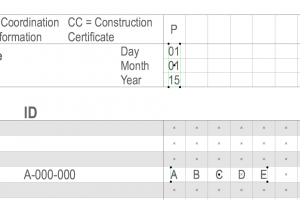
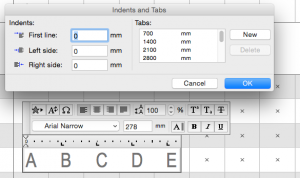
[asideguide type=”tip”]You can open the mACT Transmittal Index on the side as a reference as it will list all layouts with their names and revision code prefix.[/asideguide]
- If layouts are added and subsequently need to be inserted in the drawing schedule then this is best done manually as opposed to repeating step 1-2-3. Otherwise you won’t be able to tell which previous issues belong to which layout.
- The Saved View of the A-000-000 Drawing Transmittal worksheet is placed on two layouts:
- Static sections are placed on the Master Layout, preventing them from being edited.
- Sections subject to change are placed on the Drawing Transmittal Layout (located at the top of your Layout tree). This allows you to move the drawing content over, if, god forbid, you have more revisions than currently fit on the layout.
Schedules & Indexes
mACT includes several pre-configured Schedules & Project Indexes to help you schedule areas, windows / doors, Views as well as review drawn elements:
Resources
Tips and Tricks
Feedback
ARCHICAD Training
Natspec
http://www.natspec.com.au/Documents/Worksection_Classification_List.pdf
http://www.natspec.com.au/Documents/National%20worksection%20matrix.pdf
OmniClass
